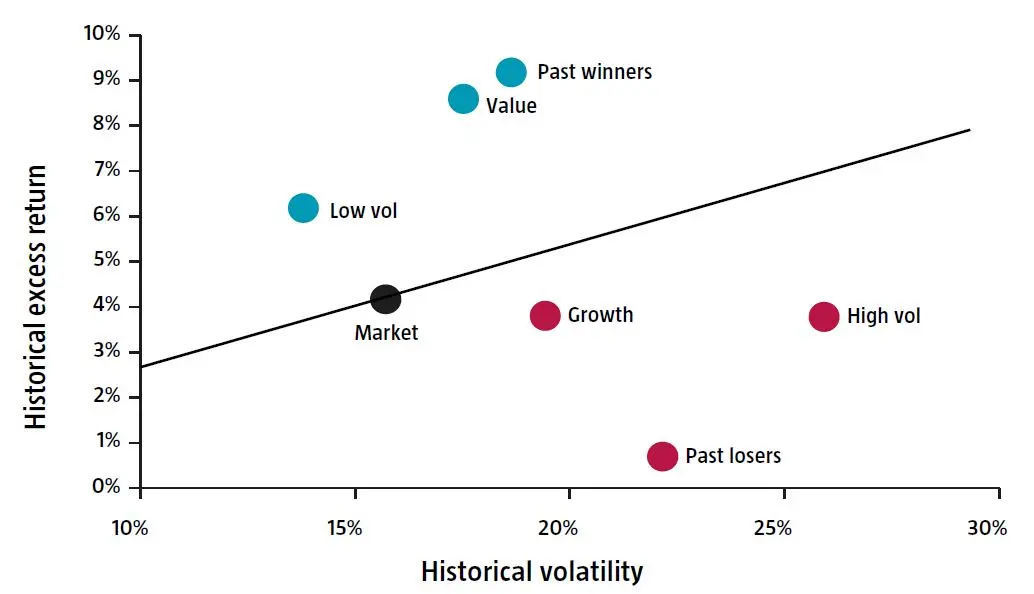Disclaimer
Neither information nor any opinion expressed on the website constitutes a solicitation, an offer or a recommendation to buy, sell or dispose of any investment, to engage in any other transaction or to provide any investment advice or service. An investment in a Robeco product should only be made after reading the related legal documents such as management regulations, prospectuses, annual and semi-annual reports, which can be all be obtained free of charge at this website and at the Robeco offices in each country where Robeco has a presence.
Please confirm that you are a professional investor and/or institutional investor and that you have read, understood and accept the terms of use for this website.
Quantitative investing
Anomaly
In the investing world, an anomaly refers to phenomena unaccounted for by standard theories, such as divergences from the Capital Asset Pricing Model (CAPM).
This model assumes a direct relationship between risk and return based on the rationality of investors. However, behavioral finance challenges this view, suggesting that investor behavior can lead to irregularities. A notable anomaly is the low-volatility discrepancy, which challenges the CAPM's predictions about risk and return.
Figure 1. Historical performance characteristics of US equity portfolio, July 1963 - December 2010

Source: Blitz (2012), Strategic Allocation to Premiums in the Equity Market, Journal of Index Investing















